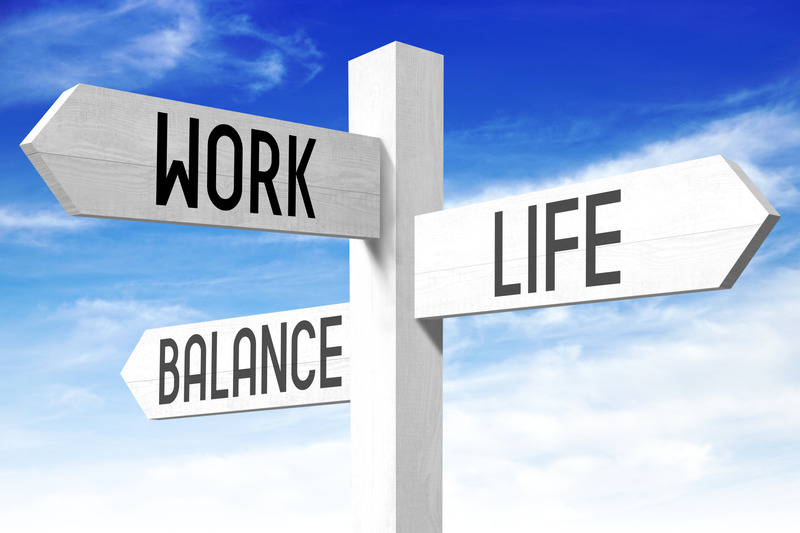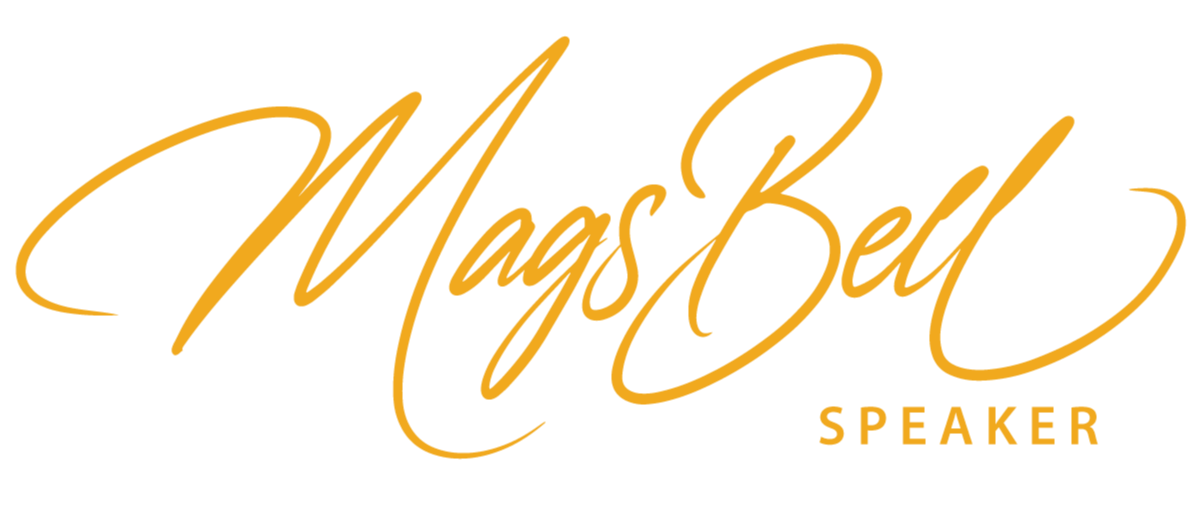Motivation Masters: How Effective LeadingME® Leaders Propel Team Performance

Eleanor Roosevelt once said, “Motivation is the art of getting people to do what you want them to do because they want to do it.” As a leader, you may often think that it is your responsibility to motivate others to do what they need to do. But that’s absolute bollocks. You are not responsible for anyone, but yourself, just as you cannot motivate anyone, but yourself. So what exactly is it that you can do, after all, you are a leader and you need your team to achieve targets and KPIs. What you can do is to coach and inspire others to motivate themselves. Let’s take a look at this. What is Motivation? Before we can go ahead and try to inspire others, we first need to understand what motivation is. Motivation is your ‘why,’ your ‘purpose’ for doing things and what it is that you desire as a result of your actions. Most people have a skewed understanding of what their motivation is. Many people I have interviewed… which was in the sales environment… would answer my question on what motivated them by saying “money”. But it’s never really the money that motivates any of us, rather what we can do with the money. So your motivation is your “why” the reason you do what you do. Once the definition of motivation is clear, most people will falter as they question what their actual “why” is. What Can You As A Leader Do To Help Them With Their Motivation? It’s not as simple as telling your team what to do. Direction and targets are good for helping people to know where they are heading. However, that will not necessarily motivate them. There is an easy way. When external forces interrupt motivations, people can end up being driven away from or procrastinating around their tasks and goals. And yes, those external forces include you as their leader. So what is it exactly that you can do on your end to help others become lean into their own motivations? Instead of thinking that you can motivate others, you must find out what each individual is motivated by. Everyone is different. How exactly do you do that? The only way to do this is to get to know your people, what they love doing outside of work and what they love spending their hard-earned money on. You need to place yourself in their mindset. Now you have the information to be able to build that motivational environment for them. You do that by leading by example… LeadingME®, inspiring, coaching, and mentoring, using their motivation to help them push through for great results. Helping Others Achieve: The BAR Model® One method I use to help others find and motivate themselves is through the use of the BAR Model®. The BAR Model® (Behaviour, Awareness, and Responsibility) has LeadingME® as its core. It may seem simple enough, but if you don’t coach around the ‘Acceptance’ part of this model, it could instead cause you and the individual to play at the top of the model. Haven’t we all done that? You point out a behaviour, the person becomes aware, and we think they will now change the behaviour but instead, they do the same unwanted behaviour that we just pointed out!!! Frustrating yes? The crucial step here is to dig deep by coaching the individual on what they see and understand, as well as what they need to do to make the changes. This is for them to come up with the answers (coaching) not you telling them what they should do as that is only ‘Awareness’ and will not move them to ‘Responsibility.’ That means there will be NO change in their behaviour. With the BAR Model®, you can help others become aware of their behaviour and inspire them to take responsibility and become motivated to change their behaviour. Giving Feedback The first step to initiate is to bring Awareness to the Behaviour which can be done through feedback. Now, you don’t just give generic feedback. You don’t just say “Don’t do that,” instead, we need to be more specific. We say “When you do …. it causes…. and that results in ……” The trick to any feedback is to be specific. We also need to be looking for positive behaviours to practice with this model. What I do is try and find positive feedback for people every day. Think of it as a 5:1 ratio or many more positive feedback conversations than negative feedback conversations. Just remember developmental feedback that you give needs to be more specific with the feedback regardless of what type you are giving. By being specific, you point out the exact action that they need to be aware of. Accepting and Changing Behaviour As I’ve mentioned, even after we give developmental feedback, this won’t always change the behaviour. This can just put you both in a cycle of ‘Behaviour and Awareness,’ without the person taking any Responsibility. So to help others accept this behaviour and eventually lead to them changing, you need to take the following steps: Once they’re in full ‘Awareness’ and you have coached them, using their own words of what their understanding is of that awareness, and the acceptance of that awareness is for them, then you can move on. Ask Open Questions Let’s take a look at open questions. We have five open questions: what, who, why, when, and how. I personally don’t use the word ‘Why’ as it can sound to someone else, accusatory or as if you have an agenda. Instead, you can focus on the others by asking questions like: If you ask closed questions like “If”, “Can”, “Would”, or “Could”, you will be stuck with a “yes” or “no” answer, which won’t help you or the other person reach a deeper understanding. If you have never coached before this may seem daunting, but it doesn’t have to be. Use notes to help you, write questions down using the open
From Doubt To Done: Overcoming Beliefs That Block Success

Do you hear that little voice in your head when you’re working on something? No, you’re not going insane, that’s your inner critic, whose ultimate goal is to make you doubt yourself. Today, we’re going to confront that little voice in our heads that holds us back from reaching our full potential. Because let’s face it, this critic is stopping us and while we have got used to it, it’s just a matter of finding the right tools to silence it. So, let’s dig deep into understanding, addressing, and conquering these limiting beliefs together. Understanding the Inner Critic First things first, what is that voice and why won’t it shut up? It tells you you’re not good enough, that you can’t achieve your goals, or that you’re bound to fail. It’s the voice that undermines your confidence and stifles your ambitions. But why do we have these doubts, and what purpose do they serve? Well, they stem from past experiences, conditioning, or external influences that have shaped our perceptions of ourselves and our abilities. The inner critic, or the saboteur, is the voice that tells you, “You’re not good enough,” or “You can’t do that.” It’s like a relentless companion, hindering your progress and preventing you from setting goals and pursuing them. The Origin and Impact of Limiting Beliefs As mentioned, these doubts and limiting beliefs often stem from past experiences or influences that have shaped our present reality. We carry these stories with us, reliving them in the present moment. But here’s the thing: the present is not the past—it’s now. We have the power to change our narrative if we choose to. Techniques for Overcoming Self-Doubt So, how do we overcome these? There are various approaches, including meditation and mindfulness practices. By taking a moment to pause, we can distance ourselves from the grip of the past and become fully present. We can cultivate appreciation for the simple things around us, grounding ourselves in the here and now. Personally, I grappled with my own inner critic a number of years ago. Even at one peak in my career, winning accolades left and right, that voice still haunted me, whispering that I wasn’t worthy. It led me down a path of depression, a dark place I never want to revisit. But through that struggle, I discovered tools and techniques to silence that inner critic and reclaim control over my thoughts and actions. This inner critic represents the ego mastering us, but the goal is to master our ego instead. Mastering the Ego: The LeadingME® Ladder of Leadership Now, let’s talk about the LeadingME® Ladder of Leadership and the role of ego in all of this. You see, our ego plays a significant role in how we perceive ourselves and interact with the world. It’s like a ladder on its side— with one side representing control and judgement, and the other side representing belittling and victimhood. When our ego is out of balance, we may find ourselves oscillating between these extremes, which can lead to feelings of inadequacy and disempowerment. Mental health issues. But here’s the good news: by mastering our ego, we can go back to the centre ground of the LeadingME® Ladder of Leadership—the place where we are in control of our thoughts, emotions, and actions. This is where tools like the 4Rs Release Model® come into play, helping us recognise where we are on the ladder and guiding us back to the centre ground. Practical Strategies: The 4Rs Release Model The 4Rs Release Model®— is a simple yet powerful method for breaking free from the shackles of self-doubt. It’s about recognising the negative self-talk, rewarding ourselves for challenging it, reframing our thoughts into positive affirmations, and repeating this process until it becomes second nature. But here’s the kicker: it all starts with cultivating a positive feel. Without that foundation, positive thinking alone won’t cut it. Cultivating A Positive Feeling Now, you’ve probably heard all about the benefits of maintaining a positive mindset, but here’s the thing: positive thinking alone isn’t enough. In order for positive thinking to truly work its magic, we need to cultivate positive feeling first. That’s right—positive feeling precedes positive thinking. Without that underlying sense of positivity and optimism, our attempts to think positively will fall flat. Resources for Self-Mastery and Growth Now, you might be thinking, “Easier said than done, right?” And you’re absolutely correct. That’s why I offer resources like webinars to dive deeper into these concepts and provide practical strategies for mastering your inner critic. It’s not a quick fix, but with dedication and practice, you can reclaim control over your thoughts and unleash your full potential. Ultimately, it’s about reclaiming control over our thoughts and actions, breaking free from the shackles of self-doubt, and embracing a mindset of possibility and empowerment. Remember, the inner critic thrives on our fears and doubts. To starve the beast, we must shift from negative thinking and feeling to positive feeling and empower ourselves to lead from within… LeadingME®. So, if you’re ready to break free from the chains of self-doubt and step into your greatness, I invite you to explore the 4R’s Release Model® with me and embark on your journey to self-mastery.See below. If you want to learn more about overcoming self-doubt and building your confidence, you can click here to join our next masterclass for free. Stay True, Stay YouAnd Keep Bringing Out Your Brilliance!
From Anger To Awareness: How to Transform an Angry Attitude into Assertive Behaviour

In today’s topic, we’re delving into the art of transforming angry attitudes into constructive behaviours. Let’s start by dissecting the concept of attitudes. When we talk about someone’s attitude, we’re referring to a consistent pattern of behaviour, emotions, and beliefs towards a particular subject, situation, or person. These attitudes can range from positive to negative, influencing how individuals interact with the world around them. Exploring Angry Attitudes vs. Assertiveness Now, let’s focus on the difference between an angry/aggressive attitude and an assertive one. Despite common misconceptions, anger and aggression are distinct from assertiveness. I’ve personally grappled with being labelled as having an aggressive attitude, and in some instances, it was warranted. When emotions run high, it’s easy to slip into a pattern of raised voices, dominating conversations, and disregarding others’ perspectives. I joined the bandwagon because that’s how I was treated. However, being assertive doesn’t mean suppressing emotions or being passive. Instead, it’s about maintaining composure, speaking calmly, and respectfully asserting one’s needs while also listening to others. The Roots of Angry Attitudes The root of angry/aggressive attitudes often lies in past experiences, conditioning and the stories we tell ourselves. Our upbringing, society, and past experiences shape how we see the world. Our egos can hijack our reactions, pushing us towards either ‘bigging’ it up or ‘belittling’ ourselves or others. But dwelling in these extremes only leads to exhaustion, strained relationships and mental health issues. The Power of Awareness Awareness is key. Being self-aware means understanding our thoughts, feelings, and actions. When we have aggressive attitudes, it usually means raised voices and trying to control situations or others, which isn’t the best place to be. It leads to conflicts where egos clash or people belittle each other. The middle ground, where we’re responsible and balanced, is where we should aim to be. Finding Balance with the LeadingME® Ladder of Leadership Being self-aware helps us stay in this balanced middle ground. When we’re aggressive, we’re caught up in the drama, reacting to everything like we’re ‘in the movie.’ By recognising where we are on the ‘LeadingME® Ladder of Leadership,’ we can step back and become more aware and we can then choose how to respond calmly. I’ve faced situations where others tried to push their unbalanced egos onto me by accusing me of being aggressive, even when I wasn’t. That’s just gaslighting, trying to manipulate the situation. But by staying grounded and calm, I can see through their behaviour and address it calmly. Instead of getting pulled into their drama, I can choose to stay in the middle ground of LeadingME®, where I feel confident and in control of myself. Tools for Transformation So, how do we shift our behaviours? Firstly, we must acknowledge the need for change and ask ourselves if our current attitude serves us well. If not, it’s time to explore tools and techniques to regain balance. Breathing exercises, meditation, and somatic yoga are just a few practices that can help ground us in the present moment and prevent our egos from dictating our actions. Using your awareness of LeadingME® and its tools can centre you whenever you go astray! By being aware and building inner strength, we can find peace even when life gets tough. Rising Stronger with Greater Balance Everyone experiences moments of anger and aggression, but it’s how we react and respond that matters. Turning angry attitudes into positive behaviours is a journey we can all take. By cultivating self-awareness and utilising tools to regain balance, we can transform destructive attitudes into positive behaviours. Remember, it’s never too late to rewrite our stories and embrace a mindset of assertiveness and growth. Stay True, Stay YouAnd Keep Bringing Out Your Brilliance
Introverts V Extroverts: Who Makes the Best Leaders?

Today, we’re diving into a fascinating topic: the dynamics between introverted and extroverted leaders. There’s a prevalent myth that introverted individuals can’t excel in leadership roles, but let’s debunk that right away. In fact, introverts and extroverts each bring unique strengths to the table, and when combined, they form a powerful team formula. So, let’s explore this further and challenge that notion together. Dispelling Myths: Can Introverts Make Good Leaders? Firstly, let’s address the misconception that introverted individuals can’t thrive as leaders. The truth is, leadership isn’t about loud charisma or dominating conversations; it’s about knowing oneself deeply and leading by example. Authentic leadership stems from self-awareness and a commitment to personal growth. Introverted leaders possess invaluable qualities such as introspection, deep thinking, and a thoughtful approach to decision-making. Let’s focus on the results these people have had, regardless of your opinions on these people. Look at historical figures like Rosa Parks who demonstrated remarkable courage and resilience in her quiet yet impactful resistance. Similarly, modern-day icons like Bill Gates, with his intellectual prowess and strategic vision, and JK Rowling, whose creative genius captivated the world with the Harry Potter series, exemplify the power of introverted leadership. Furthermore, leaders such as Warren Buffett, known for his calm and analytical approach to investing, and Angela Merkel, the former Chancellor of Germany, who navigated complex political landscapes with composure and sagacity, underscore the effectiveness of introverted leadership in diverse domains. Even individuals like Mark Zuckerberg, the introverted co-founder and CEO of Facebook, have made profound impacts through their innovative thinking and strategic leadership. These individuals, though often quiet and reserved, have wielded immense influence and left indelible marks on their respective fields, proving that introverted leadership is not only possible but can be exceptionally impactful. Leadership isn’t confined to extroverted traits; it’s about leveraging one’s unique strengths to inspire and guide others. So, yes, introverted people absolutely can be exceptional leaders when they embrace their authentic selves. Debunking Notions: Are Extroverted Leaders Superior? Now, let’s dispel the notion that extroverts inherently make better leaders. Someone’s sociability doesn’t determine leadership effectiveness; it’s about understanding and leveraging individual behavioural styles. Extroverted leaders often excel in assertiveness and quick decision-making, but they may overlook nuances and rush into risks. On the other hand, introverted leaders thrive in analytical thinking and risk aversion, ensuring thorough consideration before action. Neither style is superior; they’re simply different approaches to leadership. The key lies in recognising and embracing the strengths of both introverted and extroverted leaders. Exploring the Upsides and Downsides of Each Leadership Style Understanding the benefits and drawbacks of each leadership style is crucial for fostering a balanced team dynamic. Extroverts bring energy, assertiveness, and quick action to the table, but they may overlook details and rush into decisions too quickly without all the facts. On the flip side, introverts offer deep thinking, risk aversion, and attention to detail, but they might struggle with assertiveness, overthinking and quick action. By acknowledging these differences, teams can capitalise on the strengths of both styles while mitigating potential drawbacks. It’s not about favouring one over the other; it’s about creating synergy by combining diverse perspectives. Harnessing Synergy: The Perfect Team Formula Finally, let’s explore the magic that happens when introverts and extroverts collaborate. Rather than viewing them as opposing forces, recognize them as complementary elements that form a perfect team formula. Introverts bring depth, reflection, and meticulousness, while extroverts infuse energy, assertiveness, and quick action. By recogising our own style, its strengths and weaknesses as well as others, we can optimise the result of anything. When these qualities harmonise, teams achieve balance, innovation, effectiveness and great results. By embracing diversity in our opposite bevavioural style and fostering an inclusive team culture, leaders can unlock the full potential of their teams. Remember, it’s not about being better than the other; it’s about leveraging each other’s strengths to achieve collective success. Embracing LeadingME®: A Path to Balanced Leadership LeadingME®—a concept rooted in self-awareness and balance—is key to unlocking leadership potential. Do I truly understand myself? That’s the essential starting point. When we have a deep awareness of our own strengths and weaknesses, we find ourselves in that vital middle ground of leading ourselves, a concept we often emphasise. In this space, we take responsibility for our actions and responses, effectively managing our ego. The LeadingME® Ladder of Leadership illustrates how our ego can veer to extremes, either towards bigging up or belittling ourselves or others. Moving from one extreme to the other, we risk losing sight of the balanced middle ground along with our mental health. This balanced state is where true leadership flourishes. It’s about acknowledging our capabilities while also recognising areas for growth. By maintaining this equilibrium, we cultivate resilience and authenticity in our leadership journey. Unveiling the Importance of Self-Awareness in Leadership As someone who has at one point in my life, personally grappled with the challenges of maintaining mental well-being, I’ve come to appreciate the importance of self-awareness and balance in leadership. There was a time when I allowed myself to be consumed by the extremes of my style, veering between moments of overwhelming ambition and periods of deep self-doubt. It wasn’t until I embraced the principles of leading myself—finding equilibrium and understanding my strengths and weaknesses—that I began to thrive as a leader and in the wholeness of life. The journey of self-discovery led me to explore personality/behavioural frameworks like Wilson Learning (the first framework I came across) Myers-Briggs, and DiSC to name just a few, which provided invaluable insights into my own preferences and tendencies. Understanding where I fell on the introverted-extroverted spectrum helped me recognize the inherent strengths that come with my behavioural style. It also encouraged me to appreciate the diversity of others’ behavioural styles and the unique contributions that introverted leaders bring to the table. By understanding our own behavioural styles and more importantly, flexing them when necessary, we can navigate diverse team dynamics effectively. Whether introverted or extroverted, embracing your authentic
On a Tightrope? Learn How To Balance Life And Work

Work-life balance – what the bloody hell does that actually mean? Let’s talk about it in simpler terms. I’ve always struggled with this idea because life isn’t as straightforward as balancing two things on a scale. In reality, our lives are not a straight line, even without considering work. Life is more complex than just finding an equilibrium between two things. Let’s break it down and figure out what it means for each of us. Balancing Act When we say work-life balance, some think it means having a perfect schedule – starting and stopping at specific times, creating a clear boundary before enjoying personal life afterwards. But in reality, life throws unexpected stuff at us. It’s more like a tricky dance than a perfect scale. Dealing with work-life balance is finding what works best for you. While it may mean that you don’t have exact start and stop times for your tasks, it means that you feel comfortable in your routine without compromising your well-being. Setting Priorities Sometimes, you end up doing more at work than planned, and then you have to go back to the important things you initially set out to do. Instead of stressing about perfect balance, let’s figure out what’s really important. Identify what matters most at work and in your personal life and know what should come first. Setting some things at work aside to deal with your personal life and vice versa doesn’t mean you’ve lost balance—you just identified what’s most important. No one ever, on their deathbed ever said “I wish I’d stayed at work longer rather than spending the time with friends or family.” Forget Multitasking Doing many things at once may seem cool, but research shows it’s not as great as we think. Being fully present in one thing at a time is way better. It’s like giving your full attention to a work task when you’re working and doing the same at home. By focusing on one thing at a time, we avoid not only making errors but we can also get things done more efficiently. Tools for Getting Back on Track We all need tools to help us stay balanced. The LeadingME® idea helps us take charge and return to a balanced state when things feel out of control. Recognising when we’re leaning too much one way allows us to use tools like meditation or LeadingME® tools. Understanding the Ego We don’t have a choice but to work with ego and we need our ego. Think of the ego as either mastering you or you mastering the ego. By understanding and guiding our ego, we can avoid extremes of ‘Bigging’ ourselves, others or things or ‘Belittling’ ourselves, others or things, and instead find a middle ground of LeadingME® that feels good. Try and take a look at your own situation from a different perspective because this allows you to guide your ego to that middle ground. Make Balance Your Own Work-life balance isn’t the same for everyone. Instead of fitting into someone else’s idea, figure out what works for you. Talk to the people around you about your needs and priorities and also theirs. This way, everyone understands and supports each other. Wrap-Up As we take a moment to think, let’s simplify work-life balance. Instead of chasing a perfect balance, let’s focus on what makes sense and works best for us and those around us. Being present, setting priorities, setting boundaries, and using simple tools to help us create a balanced and meaningful life. LeadingME® with intention makes the journey more enjoyable and true to who we are. Find the middle ground that works well for you and helps you stay on your path without going astray. Stay True, Stay You, and Keep Bringing Out Your Brilliance!
How to Handle Difficult Conversations

Today, let’s delve into the crucial topics of conflict resolution and handling difficult conversations. While they may seem like separate issues, I believe they share a common approach. Our objective is to transform what might feel like a battleground into a constructive dialogue. When we hear the word “conflict,” it often conjures images of chaos and strife, thanks in part to media portrayal. However, I see it as an opportunity to understand the perspectives of all parties involved and find a way forward. Conflict resolution is about exploring both sides and seeking a collaborative solution. It’s all about Perspectives Imagine you’re in a situation with someone, and you both have different viewpoints. It’s like standing in front of the number six. From your angle, it appears as a six. However, someone standing on the opposite side of the number may see it as a nine. Both perspectives are valid, and both are inherently right. This simple illustration highlights a fundamental truth in conflict resolution and communication: people often perceive the same situation differently based on their viewpoints, experiences and beliefs. The issue often arises from our tendency to perceive one side as right and the other as wrong. This is where we go wrong – we need to consider how each person is looking at the situation and what they see, hear and feel. To address such conflicts effectively, it’s crucial to understand, try to view and respect all perspectives involved. Handling difficult conversations can feel challenging because we are consumed by thoughts like, “What if I say the wrong thing?” or “Will they react negatively?” in LeadingME® Ladder of Leadership terms ‘Belittling’. Then there is the other side of the LeadingME® Ladder of Leadership ‘Bigging’ where we are consumed with thoughts of “What do they think they are doing?… not on my watch they don’t.” or “I’m going to sort them out once and for all.” The key is to approach them prepared, skillfully and balanced. (If you want to know where you are on the LeadingME® Ladder of Leadership, then click this link to hear all about it from Mags Live). Here are some tips on how to handle difficult conversations: Preparation Is Key Effective conflict resolution and issue management requires careful preparation and a fact-based approach. People often jump to conclusions based on hearsay or gossip, which can lead to unnecessary conflicts. Instead, it’s crucial to encourage individuals to provide concrete evidence and stand by their claims if they bring forward concerns. This ensures that decisions are made based on factual information and not unverified rumours. Furthermore, it’s important to be prepared for unforeseen personal matters that may arise during discussions. In these situations, maintaining a supportive and non-judgemental stance is essential. When addressing issues, take on the role of an investigative professional, gathering all relevant evidence and listening to all sides of the story. Create a safe space for them to share their perspective without judgement. It also includes any of your own firsthand experiences of the situation. You have the specifics logged. This approach helps you make informed decisions and handle conflicts with objectivity and professionalism. Craft an Effective Opening Statement The next important step is to begin the conversation with a clear and open statement. Being upfront and transparent about the issue is crucial; don’t try to hide or dance around it. When you approach someone with uncertainty or vague language like, “I’ve heard some things,” it can make the other person anxious and defensive. To prepare for this, craft an opening statement that sets the stage for a constructive conversation. You might say something like, “I’ve learned that there have been discussions about x, y, and z, and I’m here to listen to your perspective. I haven’t made any judgements; I simply want to understand your point of view.” If you’ve done your preparation and feel confident, avoid jumping to conclusions or worrying about potential reactions. Staying neutral and clear in your statement can make the discussion smoother and more productive, ensuring that both parties understand what the conversation is about. Listen, Listen, Listen The key point to remember is the importance of active listening. As the saying goes, “We have two ears and one mouth for a reason,” which means we should listen more than we speak. After your clear opening statement, it’s essential to shift the focus from talking to listening. You do this by preparing a really good open question. This is the moment to put a mental “zipper” on your mouth and engage your ears. This means not just hearing words but trying to understand the emotions and thoughts behind them. This involves staying focused during the conversation, understanding their message and showing that you value their viewpoint. If you find it necessary, you can let the other person know that you’ll be taking notes to help you remember important points and ensure you grasp their perspective. Then, make a conscious effort to truly hear what they’re saying and show them you are committed to understanding their perspective. This active listening approach will help facilitate a meaningful and productive conversation. Recap and Clarify Summarising back to them, what you thought you’d heard after the other person has finished speaking is a crucial aspect of effective communication. It’s important because sometimes, just like the number six and nine scenarios, we may interpret things our way. We tend to hear what we expect or want to hear rather than exactly what someone else is saying or meaning. This principle aligns with Stephen Covey’s insights in his book, “The 7 Habits of Highly Effective People.” His fifth habit encourages us to prioritise understanding others before seeking to be understood. It’s all about actively listening and comprehending before jumping to conclusions. By embracing this practice, you demonstrate your commitment to genuinely understanding the other person’s perspective before attempting to convey your own. Collaborative Problem-Solving When it’s your turn to speak, it’s essential to do so with an open mind. The aim is to
6 Top Tips To Being A Great Leader

What makes a great leader? When we pose this question to different individuals, we often receive varied responses, making it challenging to establish a clear and universally accepted definition of leadership excellence. As a result, many people find it perplexing to determine how they can become exceptional leaders or even evaluate their leadership abilities. Let’s discuss the attributes of a great leader. I have six key points to share with you regarding exceptional leadership, drawing from my personal journey of evolving from a manager who merely directed tasks to a leader who inspires and empowers. These insights have been honed through years of experience in management roles and collaboration with high-ranking executives, as success at the top of the organisational hierarchy can significantly impact the entire workforce, promoting a more harmonious and efficient workplace structure. LeadingME®: The Foundation of Great Leadership One key concept we will explore is LeadingME®, a program I have developed based on my extensive interactions with diverse individuals over the years. LeadingME® focuses on self-awareness and understanding, as I’ve come to realise that leadership fundamentally involves guiding individuals who choose to follow. Organisational cultures are shaped by leaders who set an example, but this influence extends beyond just the top-tier executives; it includes influential figures throughout the company. The critical aspect is whether these leaders are exemplifying the right behaviours, aligning their words with their actions, or falling into the trap of greed and unbalanced ego, which has led to the downfall of many prominent businesses. LeadingME® revolves around achieving a balanced ego, rather than dismissing ego entirely. Recognising that ego is a natural part of being human, the key is to strive for balance. This balanced ego provides clarity about what is necessary to benefit the company, its people, and oneself. Leaders should prioritise self-improvement, but not at the expense of the organisation or its employees; it’s about striking the right balance. To lead effectively, whether personally or within a business context, one must embark on a journey of self-discovery. This is where LeadingME® takes its root, emphasising the need for self-awareness. Leaders must intimately understand themselves—clarifying their vision, purpose, and values. These values transcend the generic ideals often associated with leadership, delving into deeply personal beliefs that influence their actions and decisions. Living in alignment with these values is critical, as straying from them can lead to dissatisfaction, stagnation and mental health issues. Ultimately, LeadingME® empowers individuals to recognise when their current path is not serving their best interests and offers the insight and courage to initiate change within themselves, rather than seeking external blame. In essence, it’s about knowing oneself profoundly and using that knowledge to lead authentically, thus creating a positive impact on the organisation and its people. Here are the Six Keys to Great Leadership. Top Tip #1 Knowing Yourself Understanding oneself is absolutely essential. Without a clear understanding of who I am, it’s challenging to find any real purpose or direction in life. When I have a strong grasp of my own identity, desires, and needs, it becomes evident whether the company I’m associated with aligns seamlessly with my values, vision, and purpose. When I genuinely comprehend and connect with the company’s values, vision, and purpose, everything falls into place. I wholeheartedly embrace their mission and feel a deep sense of alignment. This synergy enables me to excel within the organisation, and when I bring new people on board, they too find themselves naturally contributing to the organisation’s success. It’s because we all share common values, purpose, and vision, or at the very least, we find points of convergence within these areas. Before anything else, I must truly know myself. Top Tip #2 Understanding Your People In leadership, it’s vital to comprehend your team members deeply. Many believe money is the primary motivator, but it’s more complex than that. To illustrate, I’d challenge candidates during interviews: “Imagine your worst manager, and you wanted to leave your job desperately. Now, I offer you increasing amounts of money to stay—£50,000, £100,000, £200,000, half a million, even a million. Would you accept?” they all still declined because money alone didn’t suffice. The real motivation lies in what money can offer. As a leader, I realised I must understand what motivates each team member personally. Is it family, travel, hobbies, or something else? This motivation is tied to their values and happiness. To achieve this understanding, I engaged in genuine conversations, showing authentic interest in their beliefs and priorities. It’s not about superficial interest but about building empathy and truly grasping each team member’s individuality. Top Tip #3 Embracing Company Vision, Values, and Purpose The third important thing to consider is aligning with the company’s vision, values, and purpose. You must make sure that these align with your own goals and those of your team. To do this, you should involve your team in creating a vision not only for the company but also for your specific team. Ask questions like: What do we want to achieve in 10 years, 5 years, 3 years, or even just 1 year from now? This helps us set clear goals and work toward them. Everything we do and discuss should revolve around whether it fits our values, vision, and purpose. Many companies have a mission statement, but it’s essential to create one specifically for your team. This ensures that everyone is on the same page and rowing in the same direction. It’s crucial to share this with both existing and new team members so that everyone knows where we’re headed and can contribute effectively. If you haven’t done this yet, it’s something to prioritise. Top Tip #4 Clarity of Direction Once you possess a deep understanding of your goals, your team, and the company’s vision, you can transmit this clarity to your team members. This is not a matter of simply standing aside and hoping for the best, allowing your team to stumble and learn from their mistakes. Yes, there is value in allowing people to make
Workplace Culture and Productivity

In the modern professional landscape, the term “toxic workplace” has become more than a buzzword—it’s a reality that countless individuals face daily. The effects of negativity, unaddressed issues, and a misplaced focus can undermine the very essence of a harmonious and productive work environment. In this blog, we will dissect what defines a toxic workplace, unravel the consequences of a misguided focus, and chart a course toward effective communication and resolution. What is a toxic workplace? What does that actually mean? The term “toxic workplace” often floats around conversations, a label attached to environments we’re cautioned against or the ones we find ourselves struggling within. But what exactly constitutes a toxic workplace? There are three key facets to that. Negative behaviours that either go ignored or rewarded You’re dealing with a situation where negative behaviour is occurring, and people are behaving in ways that create obstacles for others. They might believe their actions benefit them, yet these actions have either been positively reinforced or completely overlooked. Over time, this can contribute to the development of a bullying environment, as there’s no correction of behaviour, thus leading to the emergence of fear. Consequently, this fear starts to take root. A significant aspect to consider is that individuals may not even realise they’re engaging in bullying behaviour, nor do they grasp the negativity it inflicts upon others. This lack of awareness stems from the fact that these behaviours go unaddressed. Often, people don’t recognise that these learned behaviours have been acquired over time through interactions with family, friends, and colleagues. This brings us to a crucial LeadingME® point: If one remains unaware of their actions, how can they initiate change? When such behaviours are disregarded or even rewarded, the cycle repeats itself, ensuring the continuation of the same unfavourable outcomes. This underscores the importance of addressing these matters from the outset. Harassment is played down or it’s ignored Picture this: someone attempts to make a joke, but, it falls short of being humorous. Despite their belief in its comedic value, others don’t share the sentiment. Regrettably, no one steps up to address the situation; instead, it gets swept under the rug. Herein lies a critical question: How can we expect a shift in behaviour if those responsible remain unaware of their impact? Some might argue that these individuals are indeed aware of what they’re doing, but that mostly comes from a place of scepticism. We so easily mistake incompetence for malice when the reality is, most of these people are just completely oblivious to their actions and how it affects others. They live in their own world. While it may apply in some cases, it’s not a universal truth. Regardless, it is imperative that the individual responsible for such behaviour is made aware that their actions are inappropriate, and are alerted to potential consequences. The consequences of allowing harassment and negative discourse to persist are far-reaching. They contribute to an erosion of trust within the team, the management, and the company as a whole. This breakdown in trust sets in motion a chain reaction. Inevitably, fear takes root, further undermining trust. This environment then becomes fertile ground for decreased productivity. Employee engagement in work goes down, and without intervention, toxicity increases. Gossip and rumours In an environment characterised by rampant gossip and circulating rumours, it’s astonishingly easy to become entangled in these discussions. People often find themselves delving into personal opinions about others, engaging in conversations and making up stories about various individuals. When there’s a kindred spirit who is equally willing to contribute to such discussions, it only fuels the fire of negativity. This tendency to dwell on negativity affects our outlook and affects various aspects of our lives, behaving much like a contagious disease that spreads relentlessly. The presence of gossip and rumours contributes to the build-up of powerful emotions such as resentment, anger, mistrust, and fear, all of which feed on and reinforce one another. As a result, we find ourselves facing a complex web of negativity. The cycle begins with negative behaviours that may ultimately pave the way for a bullying culture, particularly when these actions remain unaddressed and uncorrected. Furthermore, the act of gossiping also plays a role, alongside the previously mentioned harassment and bullying, in fostering an environment riddled with negative dynamics. These three elements converge to form a climate of fear, a deterioration of trust, and a breeding ground for resentment and anger. Now, ask yourself, is this truly the kind of atmosphere you envision for your workplace? Probably not. So, if that’s the case— and I sincerely hope it is— what steps can we take to address this situation? This is where the notion of shifting focus comes into play, differentiating between wrong focus and change of focus. Wrong Focus The wrong focus entails succumbing to the negative aspects— engaging in discussions that involve speaking ill of others, and degrading someone else so you can feel better about yourself for all of two seconds. However, transforming this focus necessitates a departure from the vicious cycle of negativity. Instead of getting caught in the trap of criticising and complaining, which ironically aligns with the very behaviours you claim to despise, the key lies in shifting the focus towards a more constructive direction. Often, this transition is fueled by a sense of frustration stemming from the fact that nothing is changing. Well, nothing is going to change if you keep focusing on all that negativity. So, how can we begin the cycle of change, particularly within an environment that might appear deeply entrenched in negativity? It’s important to understand that relying solely on positive thinking won’t suffice. You can’t just go to work thinking positively, expecting that’s going to fix everything; genuine positivity necessitates an emotional shift. To achieve this, there are a couple of things I can suggest. For employees in this situation, I’d recommend a direct conversation with the individual responsible for the issues at hand. Rather than seeking validation or discussing the
The ART of Managing Remote Teams

The COVID-19 pandemic has forced organisations around the world to embrace remote working, bringing about a significant shift in the way people work. Let’s explore the ART of managing remote teams and the importance of balancing individual needs with achieving desired results. Drawing insights from the experiences of remote workers, we will explore the challenges faced and provide valuable strategies for effective remote management. Ask: Understanding Individual Preferences A – One crucial aspect of managing remote teams is recognising that different individuals have varying needs and preferences. Some employees thrive on the social interaction of an office environment, while others find increased productivity and flexibility when working remotely.As a manager, it is essential to communicate with your team and understand their preferences. By asking questions and actively listening, you can gain insights into what works best for each individual and create a supportive work environment, within the company procedures. Results: Focus on the Outputs R – A common concern among managers when transitioning to remote work is the loss of control over their team’s activities. However, effective remote management is not about micromanaging; it’s about empowering individuals to achieve results. Instead of fixating on direct supervision and inputs, shift your focus to fostering their growth and development to achieve the results. Regularly discuss goals, provide constructive feedback, and identify opportunities for skill enhancement. By emphasising individual development, you can create a motivational environment for your team. You can only do this if you have worked out their motivations… see ASK above. Training: Crucial for Remote Teams T – Providing training and development opportunities is crucial teams and especially for remote teams. It’s not only about preparing individuals for future roles, more importantly it’s about addressing their current needs and uncertainties. Invest in training programs that help employees build the necessary skills for remote working, such as effective online communication and presentation skills. Prevent boredom setting in invest! Highlighting Domestic Violence It’s essential to make yourself aware of domestic violence, particularly in the context of remote working. For individuals facing domestic violence or coercive relationships, the workplace may serve as a lifeline and a sanctuary. Leaders need to be mindful of this and create an environment where employees feel comfortable expressing their needs and concerns. By fostering open communication and providing support, leaders can help create a safer and more supportive work environment for everyone. This type of environment creates great results for everyone. If you are unsure of what to do about these situations then seek help in addressing this and look for people you can refer to. You don’t need to have all the answers. (see Ref below) Challenges and Benefits Remote work brings both challenges and benefits. Some people thrive in the remote environment, enjoying freedom and increased productivity. Others find it difficult to adapt, lacking the necessary training and struggling with the lack of social interaction.The importance of asking employees about their preferences and needs should be given emphasis. Understanding what works best for each individual is crucial for creating an effective remote working strategy. Balance Between Needs and Results Managing remote teams requires a delicate balance between individual needs, the company’s needs and achieving desired results. By adopting an open and empathetic approach, you can create an environment where employees feel heard, supported, and motivated to excel. Embrace the ART of managing remote teams by asking your team members about their preferences, focusing the outputs and results not inputs and supporting their growth and development, helping them to prioritise balance. By doing so, you will unlock the full potential of your remote team and drive both individual and collective success in the ever-evolving world of remote working. PS If you are going through a domestic violence situation or you know someone who needs help, please reach out (in Australia) to:Jaeneen Cunningham of Safe Haven (Southeast Queensland, Australia) For girls and young women, contact:Mel Thomas of The KYUP! Project (Sydney, Australia) Or the many organisations around the country and around the world who can help. And, as always, stay true, stay you and keep bringing out your brilliance!
AI and You: Love it, Hate it or Indifferent

Can you guess what our feelings about AI reveal? In our recent poll, we asked our readers about their feelings towards AI, and boy, did the results turn some heads! We presented four options: fascination, worry or perceived threat, and mixed feelings; along with an option for those who simply couldn’t be bothered. Surprising Lack of Concern Strikingly, not a single soul expressed worry about the threat of AI. Quite fascinating, wouldn’t you agree? However, it’s possible that some individuals who chose “mixed feelings” might have a slight concern alongside their fascination with AI. Indifference and Observance Now here’s an interesting snippet: a whopping 8% of respondents declared that they simply couldn’t give two hoots about AI. While it’s important to respect individual opinions, not caring entirely about a topic that is increasingly prevalent in our lives, raises some concerns. Staying observant and aware of the advancements and implications of AI is crucial, much like how those clever meerkats are in the wild, always looking around, observing, and keeping everything noted. Complexity of Opinions The survey also unveiled a rather intriguing revelation: 46% of the votes fell into two categories. One group was completely fascinated with AI. Yes, it’s fascinating indeed. It’s been around for many, many years but it just come into the general public’s viewing. So, we are now at the stage where Joe Bloggs is really starting to understand what AI can do for us. While the other group had mixed thoughts about it. This mixture of responses underscores the complexity and diversity of opinions when it comes to AI. The Moral and Ethical Side Now, we lead our discerning gaze on the moral and ethical implications of AI. Treading this path requires a strong sense of personal responsibility. I found a riveting TED Talk by Gary Marcus, an esteemed figure in AI research, where in his talk on “The Urgent Risks of Runaway AI – and What to Do About Them” stated “that truth and reason will not survive the evolution of artificial intelligence. Not if untrustworthy technology continues to be integrated into our lives at such dangerously high speeds” – and this statement has stirred up a mélange of emotions in me. While the advancements and capabilities of AI are undeniably fascinating and beneficial, ethical concerns arise when considering its potential misuse, such as in the dark web and manipulating election outcomes. And so, he advocates for a global, not-for-profit organisation to regulate this technology, safeguarding democracy and our collective future. The Legal Ramifications On the legal front, while human creations are copyright-protected, AI produced creations are NOT. Recent cases highlight ethical concerns when AI-generated content is misrepresented. Passing off others’ work as one’s own infringes on copyright and diminishes originality. Proper attribution and transformation of ideas is essential. So if you are using AI to produce content then you are not covered under copyright law, as it gathers others content to produce content for you. Be very aware; you have been warned! My Personal Take In my own work, for example, I make a conscious effort to properly attribute quotes and acknowledge the original source when using it in my social media. If the origin is unknown, I honestly express uncertainty and focus on the value of the quote itself. This approach aligns with both legal considerations, ethical principles and values, as it respects the intellectual contributions of others while still using quotes as a valuable tool for communication. Bonus: IP Protecting Tool Enter Zigit, a nifty app developed as a powerful solution against copyright infringement and a shield for creative works. Just to be clear and transparent, I’m not paid to do this. But this app will become an invaluable tool for me and my team and and for anyone of you out there that create either Video or audio content. So I thought I’d share it here with you all. What Zijit does for content creators is generate a digital fingerprint of their voice, ensuring proper recognition of their masterpieces. With this software, creators can protect their intellectual property and effortlessly prove authorship in case of a legal squabble. It’s like having Sherlock Holmes on speed dial! Be a Meerkat The field of AI continues to intrigue and arouse diverse emotions in people. While it provides enormous opportunities, it also necessitates a serious evaluation of its moral, ethical, and legal ramifications. We can harness the power of AI for constructive purposes and assure a secure and democratic future by staying alert and keeping our eyes peeled, as would a meerkat do in keeping aware and informed of what’s going on around, not by sticking our heads in the sand like the ostrich. We hope that we have provided you with useful information and prompted additional thoughts on this ever-changing subject, with you sharing your feedback in our small poll. By all means, put comments down. Let us know your thoughts, and what you feel about what’s going on at the moment. And, as always, stay true, stay you and keep bringing out your brilliance!
